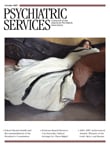The Unsayable: The Hidden Language of Trauma
I cannot recall a time when my eyes filled with tears while reading a textbook. But Annie Rogers' book, The Unsayable , is no ordinary textbook. The central paradox is the paradox of language—how it hides and reveals. Even in the title, the author illustrates the paradox by helping the reader to understand through her beautiful writing that which is most inexpressive in language. The book reads more like a novel because the author teaches the reader through stories and reminiscences that are simultaneously personal and professional.
Rogers begins by asking some fundamental questions: "When all the traces of history have been erased and the body itself is inscribed with an unknown language, how does a child begin to speak? … How is it possible to listen so that the child comes to know something vital and speaking feely becomes possible, so that living inside one's own body is no longer a nightmare?"
The book is divided into five parts. In part 1 and part 5 Rogers employs the enormously powerful device of telling her story. From the book cover we already know that she is on the clinical psychology faculty at Hampshire College, has been a Fulbright Scholar and a fellow at the Radcliffe Institute of Advanced Studies, and has authored a previous book. Now we learn some details about her troubled and traumatic childhood and adolescence and her own personal experience with psychiatric hospitalization.
In part 2 we are introduced to the period of Rogers's training in child psychotherapy and her introduction to the work of Jacques Lacan, which she then revisits in part 5. One of the impressive aspects of this work is the way in which Rogers wrestles with Lacan's often confusing and opaque concepts for the nonanalytic audience and makes them accessible and even comprehensible. She does this by allowing us to see how she applies her own growing knowledge to the young clients who come into her office. As she puts it, "it was becoming clearer and clearer to me that the unsayable could be 'spoken' through unconscious reenactments—but at a terrible cost."
When you get to part 3 and part 4, make sure you set aside some time for the reading because you may not want to put the book down. Part 3 tells the riveting story of one child and her family who Rogers follows through childhood, adolescence, and into adulthood, and we see the ways in which trauma is transmitted unconsciously down through the generations. In part 4 Rogers shares the stories of several girls, all of whom were in residential placement because they had repeated their own histories of trauma on other children.
At its heart, however, this is not just a book about the treatment of children. This book aims at reintroducing critical concepts that seem to have become lost in an era that focuses on diagnosing, medicating, removing symptoms, and changing cognitions and behavior. As Rogers puts it, the unconscious exists, cannot be denied, and "insists, repeats, and practically breaks down the door, to be heard." The author's ultimate goal is stated clearly as well: "if we don't understand how we are predators to one another through language—how our speaking sounds and resounds through the unconscious and determines our actions—we will certainly destroy one another and our fragile little planet."



